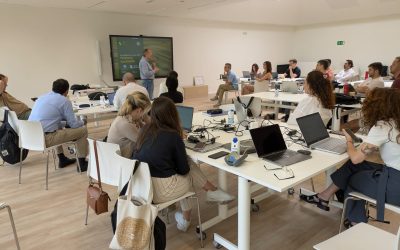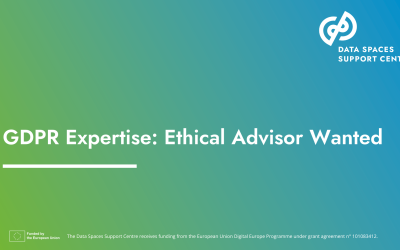We live surrounded by smart technology. We can make “a robot” out of almost anything, and robots are also getting smarter. This is an omnipresence that may excite some as well as scare others.
As humans, we have always tended to try and reach beyond our physical capabilities and overcome our limitations. Adaptation is an inborn animal ability, it’s even an instinctive urge. Being capable of building tools, capable to implement complex procedures and even to inform our practical decisions on abstract thinking, the Human animals have accomplished some crucial competitive advantages that allow us to reach a lot further that what our physical conditions determine. We try to interact with our environment and make our adaptation to it more satisfactory, by also adapting the environment to us. It is a two way process, deep-rooted in our History, and intrinsic to the development of the Internet of Things.
Today as always, we must become as smart and able as possible. Today, for the first time, our tools are becoming abler and smarter too.
The Internet of Things (IoT) embodies such a process of change and improvement. IoT refers to the ever increasing quantity of devices that are being added to our everyday lives, things able to communicate, able to collect, process and exchange data, and to operate following that available data.
According to predictions, by 2020, more than 50 billion devices will embed technology allowing them to collect and exchange data via Wi-Fi. A revolution in the shape of cutting-edge equipment already present in our lives, and also in the form of tools and inventions yet to come. The list expands by the day: wearables –like smartwatches or fitness bands– and there-ables –e.g. smart alarm clocks, smart thermostats or smart doors and windows– are commonly known; embeddables –microscopic computers inserted beneath our skin to upgrade ourselves- and ingestibles still sound a bit like science-fiction for most of us, but the smart pill market is expected to reach figures near $1K million by next year. Maybe terms like hearables or rideables will never be part of our conversations, but we are getting used to listening to smart playlists using some smart headphones, and travel daily in our smart cars.
Development of IoT has meant a significant disruption in the recent years, transforming how we live our lives as individuals, and how companies run their businesses. Internet of Things, combined with information processing and Big Data services on the Cloud, is going to enable a new breed of innovative Smart Digital Services. But nothing can be smart without being context-aware in the first place.
Implementation of Smart Digital Services largely rely on the management of Context Information, about the entities that are relevant to understanding what is happening around us, by different systems and solutions that are able to share that relevant data in a common language: “in order to enable the interoperability of solutions, it’s necessary to have a semantic interoperability of the data” –explains Sergio García, Technology Specialist and Smart City Solutions Leader in Industrial IoT Area, at Telefónica I+D.
Carlos Ralli, IoT, IPv6 and Future Internet expert, also at Telefónica I+D, technically illustrates the need of common standards by giving an example of interoperability of the data between different solutions and different sectors: “key SmartAgri players will also be able to push their data and semantic models by serializing them over NGSI. For instance Tragsa –a company specialized in agricultural development– is working out its MEGA data model for water management over FIWARE NGSI, enabling smooth interoperation with other systems within the SmartAgri sector and others such as Smart Cities or Smart Industry”.
The current lack of ICT platform standards to manage such information means an obstacle for the development of Smart Digital Services. Without open standards those services cannot be developed effectively, once and for multiple customers. Standards like FIWARE’s NGSI API, which proposes a common data model for getting real-time contextual data about cities, and open source data portals like CKAN, to publish the open data.
Providing a simple and powerful set of APIs that are public and royalty free, FIWARE is supporting the development of Smart Applications managing context information, so the FIWARE Open Platform could become decisive for the IoT breakthrough. The launch of the FIWARE Foundation has emphasized the intention of the community and its core members to push the adoption of FIWARE standards and technologies as essential tools for the cost effective development of IoT based services and solutions. Aiming to ease that process, FIWARE currently offers both open-source technical resources –like the Orion Context Broker and other GEs– as well as various IoT-ready commercial devices.
At the Mobile World Congress this year, up to four showcases were demonstrating IoT based solutions powered by FIWARE technology. Three of them took place at the SmartAgri stand, and the other one was part of the SmartCity exhibitions. The potential of FIWARE goes beyond one concrete vertical domain. It actually shows potential in any domain where management of context information is relevant. Smart Industry, Smart Logistics and Smart Home are three examples, and the Internet of Things would be present at –and be transverse to– all of them.
Let’s learn more about another three startups, part of the FIWARE community, that have produced commercially-ready products and services that make use of and belong to the Internet of Things advancements.
ECOGRIDDY
Ecogriddy´s main product is called Cortex, an IoT based solution that gathers energy data in real time from any source. It provides to its users solid energy analytics, as easy to manage as a consumer application. It's designed for energy hungry manufacturing companies that manage more than one production site and that want to run their processes in a more data-driven way, achieving costs reduction, both energy related and maintenance ones.
Ecogriddy provides a full-fledged solution, integrated with a network of sensors and with a powerful gateway, always connected to the cloud backend. Modularity, resiliency, compliance to open standards and edge computing capabilities are keystones of its architectural design. The scalability is granted both by the cloud infrastructure, and by the fact that collecting and analysing energy data is a well defined scope that can be managed with standard equipment and a flexible software.
HOPU
HOP Ubiquitous´s main project is called Glue & Blue (GnB), a mobile-oriented marketplace that brings 3D printing and IoT to the consumers market. It provides initial kits and modules to allow people to start building an IoT ecosystem, composed of customizable modules and sensors, upgradable over the air with a mobile phone and connected to Internet. Via the marketplace, artists and designers can interact directly with consumers.
It aims for the home automation market, for companies in sectors such as logistics or retail —where monitoring needs shouldn’t be impacting the look and feel at their stores—, or for the financial services market —personalized automation kits have been developed in collaboration with companies such as Fujitsu and Alliaz.
WIIM
WIIM is a project by Hearing Software, created in order to develop solutions supporting the needs of deaf people. With a smartwatch that connects to a pack of wireless sensors, distributed around the adapted public or private space, deaf people can receive useful information from their environment. In public buildings, like hotels or councils, deaf people will be able to receive notifications: a knock on the door, incoming messages from the reception, the fire alarm going off or the activation of a smoke alert.
The solution has been presented to several associations that helped to understand how to improve it and add new features, and they have been doing tests in deaf people homes. WIIM product is already developed for commercial use and aims to be not only an alarm-system, but an integral way to link people and spaces, by connecting with any other IoT device nearby.



